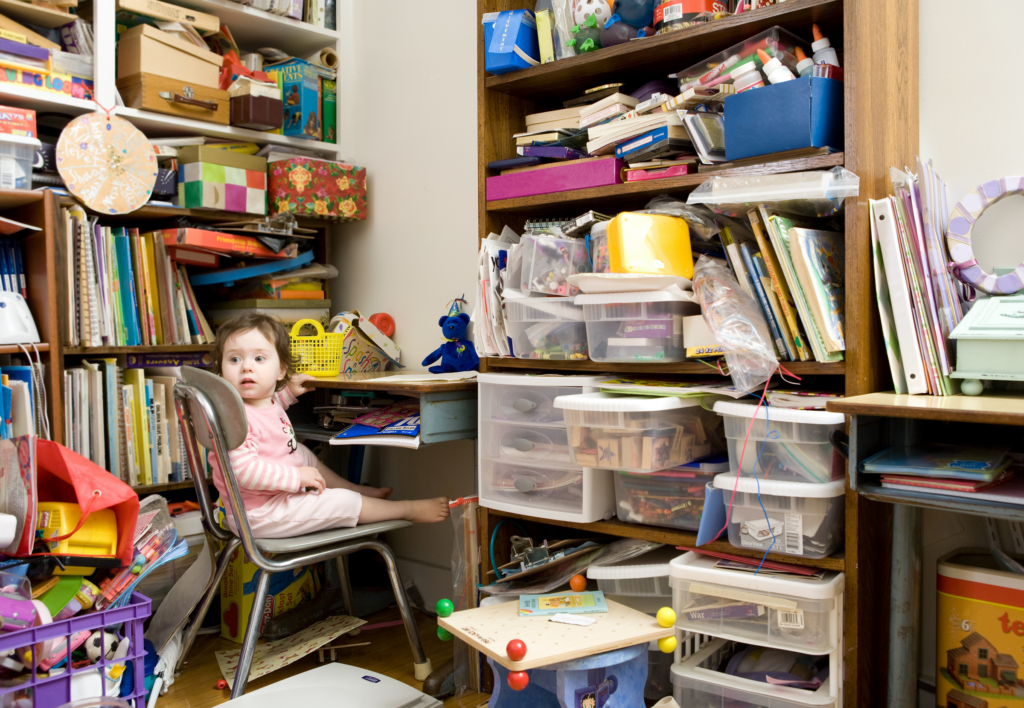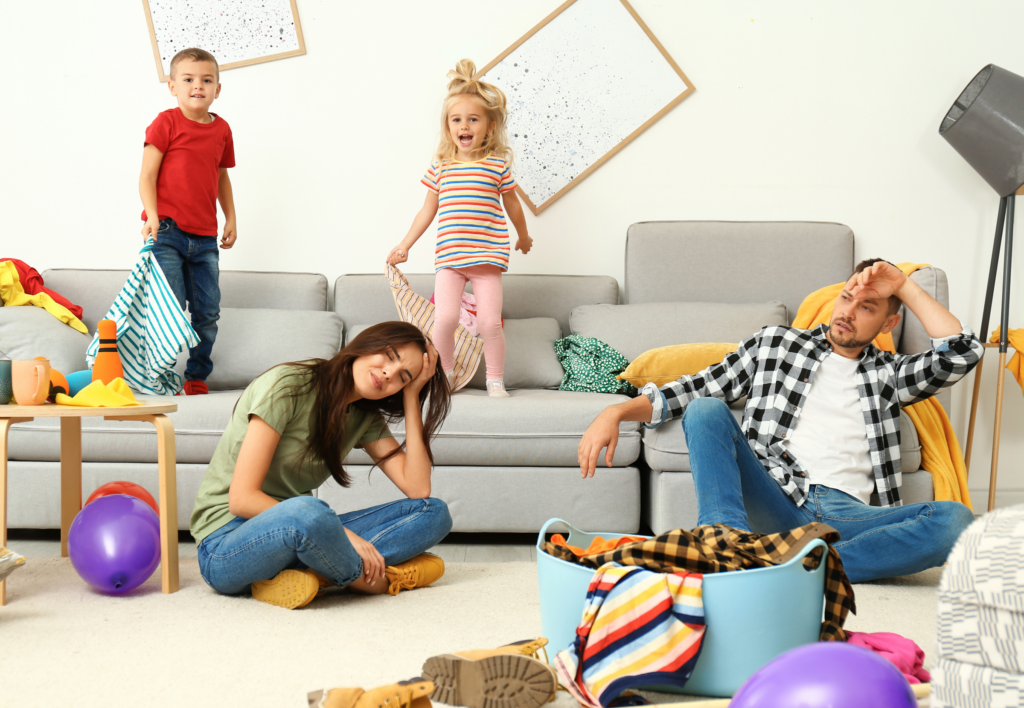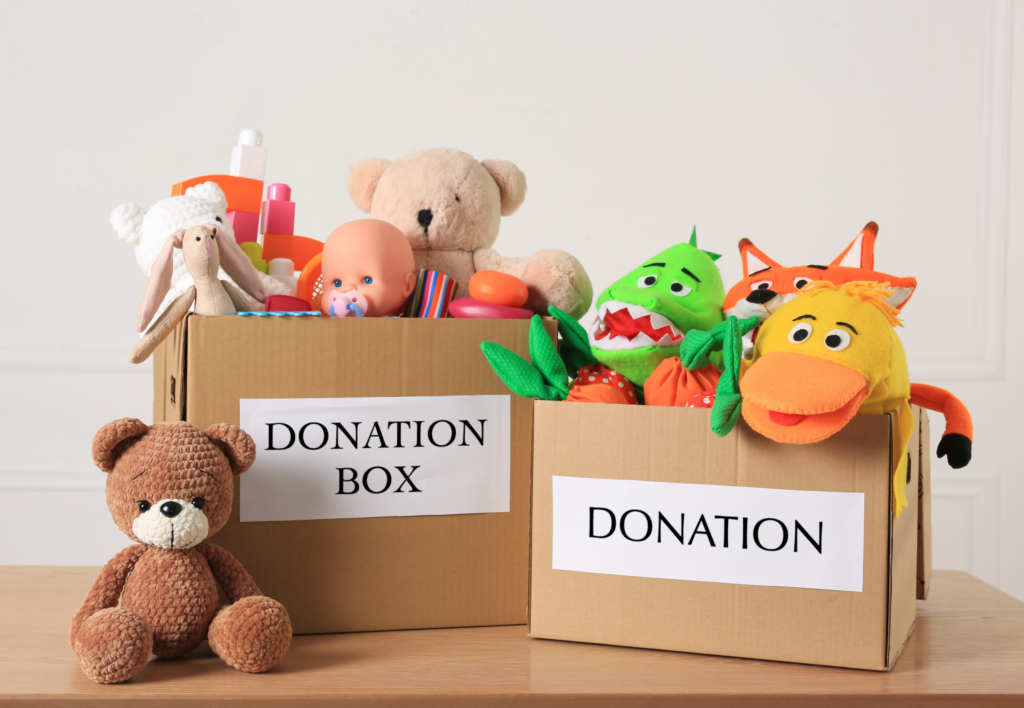9 Genius Hacks to Keep Your Home Clutter-Free With Kids!
Keeping a home tidy can feel like a Sisyphean task when you have kids. Toys on the floor, art supplies on the table, clothes strewn about—it can all add up to a seemingly endless cycle of mess and organization.
But fear not, for it is possible to maintain a clutter-free home even with the whirlwind of activity that children bring. The key lies in implementing simple, sustainable organization systems and getting the kids involved in the process. Not only does this help keep your home orderly, but it also teaches them valuable life skills.
In this post, we’ll explore 10 genius hacks to help you transform your home into a clutter-free sanctuary, making room for more fun and less stress.
Designate a Play Area
One of the most effective strategies to prevent toys from taking over your entire house is to designate a specific area for play. This could be a corner of the living room, a section of your child’s bedroom, or a separate playroom if space allows. Here are some practical tips to create and maintain an organized play space:
- Choose the right location: Pick a spot that’s both convenient for play and easy to monitor. It should ideally be a place where toys can stay out of the way of daily household activities.
- Define the space: Use area rugs, mats, or furniture to clearly delineate the play area. This visual cue helps children understand where the play zone begins and ends.
- Storage is key: Invest in child-friendly storage solutions such as low shelving units, colorful bins, and easy-to-open drawers. Labeling these with pictures or words will guide children on where to put things back.
- Make it inviting: Decorate the play area with bright colors and fun elements to encourage kids to use the space. A well-lit, cheerful area is more likely to attract their attention and keep them engaged.
- Set clear boundaries: Teach your children that toys need to be returned to the play area after use. Consistency with this rule will help them develop good habits over time.
- Involve the kids: Turn organizing the play area into a game. Challenge them to “beat the clock” when tidying up or reward them with a story or song after the area is clean.
By establishing a designated play area, you’ll not only contain the toy clutter but also create a special spot in your home where your children’s imagination can flourish without infringing on the rest of your living space.

Use Storage Solutions That Kids Can Use
An organized home is one where everything has its place, and this is even more crucial when kids are involved. The trick is to use storage solutions that are not just parent-friendly but also kid-friendly. Here are some actionable tips to create a child-accessible storage system:
- Opt for open bins and baskets: Clear or open-topped storage bins allow children to see what’s inside without having to ask for help. This also makes it easier for them to put things back where they belong.
- Lower the bar: Literally. Place shelves and hooks at a height that kids can reach. This empowers them to hang up their coats and put away their books without needing to climb or ask for assistance.
- Color code for success: Assign different colored bins for different types of toys or activities. This not only adds a fun aesthetic to the room but also serves as a visual cue for kids to sort and store their belongings correctly.
- Picture labels: Use pictures instead of words to label bins and shelves if your children are too young to read. This can be a fun art project to do together, and it helps non-readers in the clean-up process.
- Involve them in the setup: Let your children help decide where things should go. They’re more likely to remember and follow a system they helped create.
By implementing these child-friendly storage solutions, you’re not just keeping your home clutter-free, you’re also teaching your children organization skills that will last a lifetime.

Implement a Toy Rotation System
Children often have more toys than they know what to do with, and this can quickly lead to clutter. A toy rotation system keeps the number of toys in the play area manageable, ensures that children remain interested in their toys, and makes clean-up easier. Here’s how to set up a toy rotation:
- Sort the toys: Group toys by type and play value. Some toys, like building blocks or dolls, have enduring appeal and should be readily available, while others can be rotated.
- Choose a storage area: Find a place out of sight to store the toys that are not currently in use. This could be a closet, a storage room, or even under-bed storage containers.
- Decide on a rotation schedule: Depending on your child’s interest and the number of toys, you might rotate toys weekly, biweekly, or monthly. Mark it on the calendar to stay consistent.
- Involve your child: Allow your child to pick one or two “permanent” toys that stay out all the time. When it’s time to rotate, let them choose a couple of toys to swap in. This gives them a sense of control and anticipation for “new” toys.
- Keep it fresh: When you bring out the rotated toys, it’s like Christmas morning all over again. Your child will be excited to rediscover old favorites, and you’ll have less clutter to deal with daily.
A toy rotation system is a win-win: your child gets a refreshed selection of toys regularly, and you get to enjoy a clutter-free home. It’s a simple yet effective way to keep both mess and boredom at bay.

Create a Daily Clean-Up Routine
Establishing a daily clean-up routine is essential for keeping your home organized and teaching your kids the importance of tidiness. Here’s how to create a routine that sticks:
- Set a specific time: Choose a time each day for clean-up, such as before dinner or bedtime. Consistency helps children know what to expect and builds the habit.
- Make it fun: Turn clean-up time into a game. Play a favorite song and see if everyone can pick up before it ends, or create a clean-up dance to make it more engaging.
- Use a timer: Setting a timer for a short duration, say 5 or 10 minutes, can make the task feel like a fun challenge rather than a chore.
- Be specific with tasks: Instead of saying “clean up,” give specific instructions like “put the blocks back in the red bin” to make the task clear and manageable.
- Praise and reward: Acknowledge your child’s effort with praise or a small reward, such as reading an extra bedtime story, to reinforce the positive behavior.
By incorporating a daily clean-up routine, you’re not only keeping your home clutter-free but also instilling good habits in your children that will help them stay organized throughout their lives.
Utilize Wall Space for Storage
Walls are often underutilized when it comes to storage in homes with kids. Making good use of vertical space can free up floor space and reduce clutter. Here are some ideas to maximize your wall storage:
- Install floating shelves: These are great for keeping books, puzzles, and board games out of the way but still within reach when it’s time to play.
- Use pegboards: Pegboards can be customized with hooks and baskets to store art supplies, small toys, and other knick-knacks.
- Hang organizers: Over-the-door shoe organizers are perfect for storing dolls, action figures, and other small items.
- Magnetic strips: These can be used to hold metal toys, like die-cast cars or magnetic letters, keeping them off the floor and adding a decorative element to the room.
- Wall-mounted baskets: Baskets can be hung at a child-friendly height to store plush toys and soft items.
By using wall space effectively, you can keep your home neat and ensure that your child’s belongings are easily accessible, which encourages them to help with the tidying up.
Teach Kids the “One In, One Out” Rule
To maintain a clutter-free home, it’s important to manage the number of items that can accumulate. Teaching your children the “One In, One Out” rule is a great way to do this:
- Explain the concept: When a new toy or item comes into the home, another one has to go. This helps children make thoughtful decisions about what they really value.
- Make it a habit: Whenever your child receives a new item, prompt them to choose an older one to donate or pass down. This can help prevent excessive accumulation of toys.
- Involve them in the decision: Encouraging your child to choose what to keep and what to let go gives them a sense of control and responsibility.
- Celebrate the process: Make the act of donating a positive experience. Talk about how their old toys can bring joy to other children.
- Set an example: Practice the “One In, One Out” rule yourself with your items to show your kids that it’s a family value.
This rule not only helps to keep clutter in check but also teaches children about the value of giving and the importance of making mindful choices about their possessions.
Encourage Regular Donations
Regularly sorting through toys and clothes with your children and deciding what to donate can be both a solution to clutter and a way to teach generosity. Here’s how to encourage the habit of donating:
- Schedule donation days: Set aside a day every few months to go through items with your children and decide what to donate. This keeps the volume of possessions manageable.
- Talk about the benefits: Explain to your children how donating items they no longer need can help others who are less fortunate.
- Make it a family activity: Sort through items together and share stories about the memories associated with them. This can make parting with possessions a warm and positive experience.
- Choose charities together: Let your children help decide where to donate their items. This can make them feel more connected to the act of giving.
- Acknowledge their generosity: Praise your children for their donations and let them know how proud you are of their choices.
Encouraging regular donations not only helps keep your home clutter-free but also instills a sense of empathy and community responsibility in your children. It’s a valuable life lesson that extends well beyond the walls of your home.

Invest in Multi-Functional Furniture
When space is at a premium, furniture that can serve multiple purposes is a game-changer. Here’s how to choose pieces that can help keep your home organized and clutter-free:
- Look for beds with built-in storage: Many children’s beds come with drawers underneath, which are perfect for storing clothes, toys, or bedding.
- Use ottomans with storage: These can be used as a footrest, extra seating, or a coffee table, and the inside can store books, games, or craft supplies.
- Select a play table with storage: A table with built-in drawers or shelves can be used for arts and crafts while keeping supplies neatly tucked away.
- Consider a bench with cubbies: Placed in the entryway, a bench provides a place to sit and remove shoes, and the cubbies can hold shoes, backpacks, and other outdoor gear.
By selecting furniture that doubles as storage, you can reduce the need for additional storage units and keep your home looking neat and tidy.
Lead by Example
Children learn by watching the adults around them, so it’s crucial that you practice what you preach. Here’s how to set a good example for your kids when it comes to organization:
- Stay organized yourself: Keep your own belongings tidy and in their proper place. When children see this behavior, they’re more likely to mimic it.
- Involve children in your organizing projects: Whether you’re cleaning out a closet or organizing the kitchen, let your kids help and learn from the experience.
- Communicate the benefits: Share with your children how staying organized helps you feel less stressed and find things more easily.
- Be patient: Remember that learning to be organized takes time. Celebrate small victories and provide gentle guidance when things don’t go as planned.
Leading by example is one of the most powerful ways to teach your children life skills. By showing them the benefits of staying organized, you can help them develop habits that will serve them well for years to come.
Let Us Know How We’re Doing!
Did this expertly prepared resource answer your question?
Do you have another question about home maintenance, home improvement projects, home appliance repair, or something else?
Get more information, send in questions and keep the discussion going by contacting the I’ll Just Fix It Myself company customer service team at at 1-800-928-1490 or Email us at [email protected]
